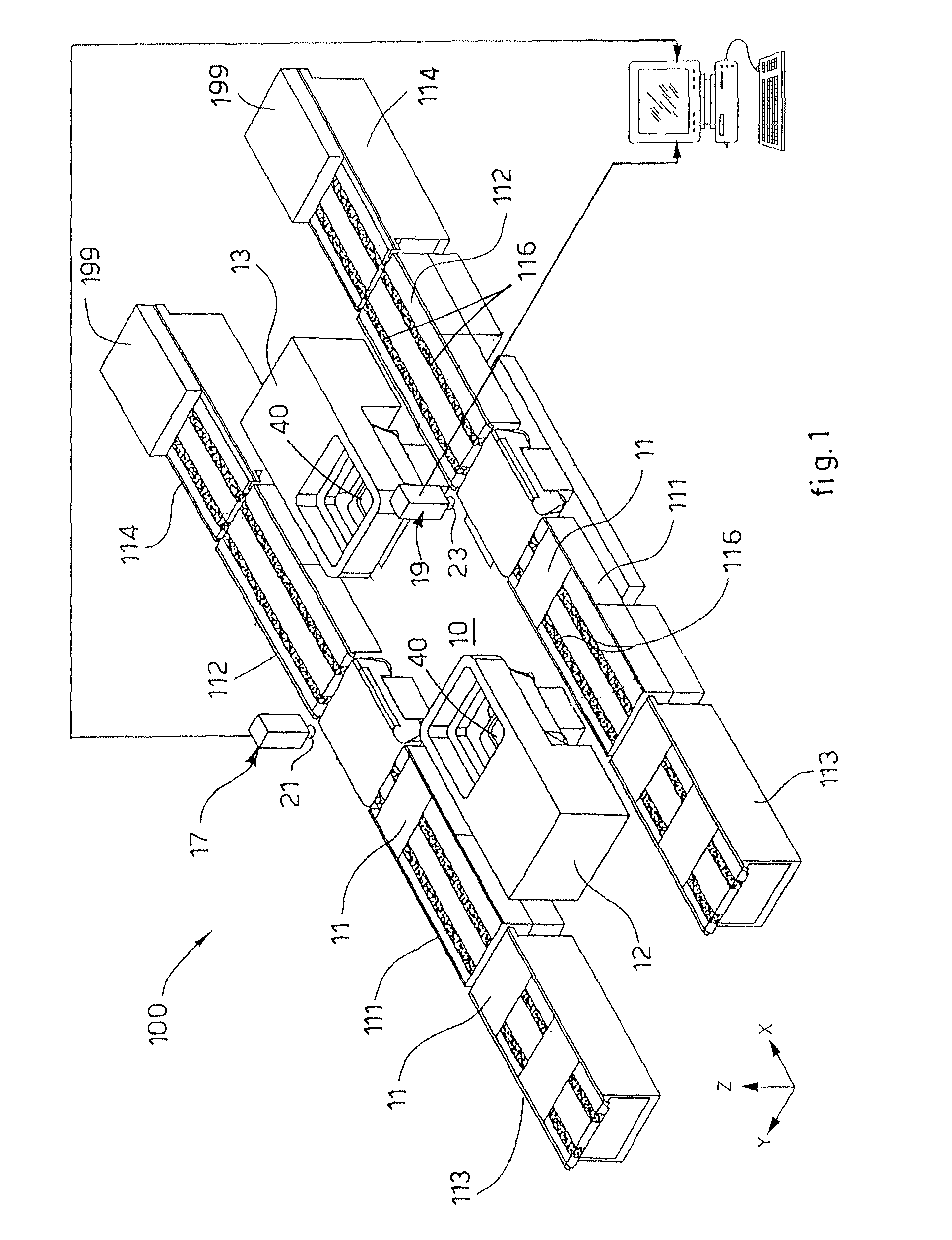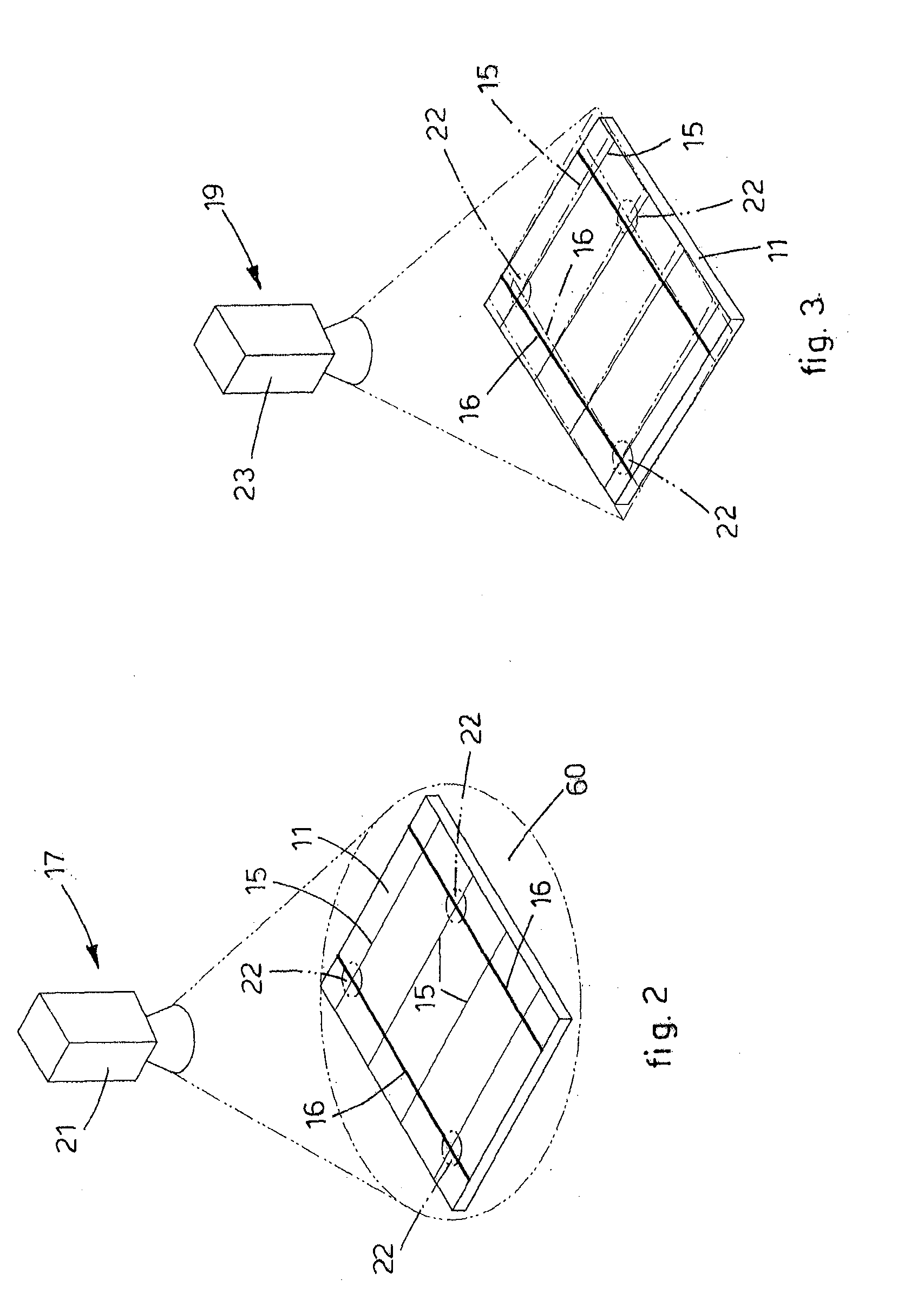Method and Apparatus to Detect the Alignment of a Substrate
a technology of alignment and substrate, applied in the direction of inspection/indentification of circuits, sustainable manufacturing/processing, final product manufacturing, etc., can solve the problems of increasing the amount of print material used, increasing production times, affecting the electrical properties of deposited patterns, etc., to reduce the risk of compromising the integrity of printed tracks, production times and materials
- Summary
- Abstract
- Description
- Claims
- Application Information
AI Technical Summary
Benefits of technology
Problems solved by technology
Method used
Image
Examples
Embodiment Construction
[0027]Embodiments of the present invention may generally provide an apparatus 10 that is usable for aligning a printing device to a printed pattern formed on a substrate, such as a wafer 11, in an apparatus 100 for the production of photovoltaic cells. In this case, the apparatus 10 is used to detect the alignment of the wafer 11 which is positioned between two printing stations, respectively first station 12 and second station 13. In one embodiment, the apparatus 100 comprises a series of printing units that are found in each of the printing stations and are used in an apparatus 100 for the production of photovoltaic cells.
[0028]FIG. 1 is a schematic isometric view of one embodiment of the apparatus 100 in which the alignment apparatus 10 of the present invention may be used. In the embodiment, the apparatus 100 generally includes two conveyors 111, two printing stations 12, 13, two outgoing conveyors 112, and a command and control unit 20. The incoming conveyors 111 are configured...
PUM
 Login to view more
Login to view more Abstract
Description
Claims
Application Information
 Login to view more
Login to view more - R&D Engineer
- R&D Manager
- IP Professional
- Industry Leading Data Capabilities
- Powerful AI technology
- Patent DNA Extraction
Browse by: Latest US Patents, China's latest patents, Technical Efficacy Thesaurus, Application Domain, Technology Topic.
© 2024 PatSnap. All rights reserved.Legal|Privacy policy|Modern Slavery Act Transparency Statement|Sitemap



